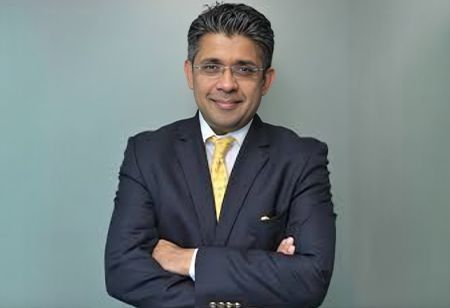Rehan Khan, Managing Director, MSD India

Rehan Khan, Managing Director of MSD India, shares that India has more unicorn startups than billion-dollar drugs. Despite a huge patient pool with diabetes, hypertension, and cancer, the country has yet to deliver a homegrown therapy crossing $1 billion. Achieving this milestone requires not just innovation but a robust ecosystem like Cambridge or China, as highlighted at Scale-Up Health 2025, organized by Eight Roads Ventures.
India has more unicorn startups than billion-dollar drugs. Despite a large patient pool of 100 million people with diabetes, 220 million with hypertension, and 1.4 million new cancer cases annually, the country has yet to deliver a homegrown therapy that crosses the billion-dollar threshold. We believe the road to such a milestone requires not just innovation, but an ecosystem as robust as those seen in Cambridge, U.S., or China.
Globally, a billion-dollar drug is often seen as the holy grail of pharmaceutical success. However, in India, the focus must shift from pure revenue to the number of patients served. The question is not whether we hit a billion in sales, but whether we can reach 100,000 or even half a million patients with therapies that transform lives. For example, MSD’s Keytruda has grown from 1,500 patients five years ago to nearly 20,000 patients today, with sales crossing $220 million. By expanding indications, building innovative access models, and lowering price points, the therapy could quickly scale towards a billion-dollar mark.
To create billion-dollar drugs, we must create billion-dollar ecosystems
The perception that India has a “patent problem” is misplaced. Instead, the real challenge lies in building sustainable access models. Our market doesn’t suffer from affordability; it suffers from cash flow. For example, MSD has worked with distributors, NBFCs, and insurance partners to ensure therapies like Keytruda are available at less than 15 percent of global prices, making them accessible to a wider patient base. Such collaborations demonstrate how financing innovations, whether through insurance, co-payment schemes, or subscription-based models, can redefine affordability in India.
We must look to Cambridge, U.S., as a benchmark for what India should aspire to. With 1,000 startups, 25,000 PhDs, and billions in funding from NIH and venture capital, Cambridge has created fertile ground for novel drug development. China, too, has scaled rapidly, with thousands of biotech trials and a government actively enabling talent to return and build local innovation. By contrast, India lacks deep collaboration between academia, venture capital, and pharma, and has produced only a handful of significant global deals. We don’t yet have even five examples of NCEs that emerged from such an ecosystem here.
Also Read: India's Innovative Therapies Set Global Standard at Low Cost
For India to achieve its first billion-dollar drug, Khan outlines a multi-pronged approach. First, strengthen collaboration between academia, startups, and investors. Second, expand clinical trial infrastructure and regulatory pathways that don’t stall innovation. Third, incentivize global talent to return and build careers in Indian biotech and biomedical research. This is not about one player: pharma, hospitals, insurers, VCs all must work seamlessly, the way ecosystems in Cambridge and China operate.
With the right models, India could reach its milestone sooner than expected. In this regard, Ayushman Bharat is a potential game-changer, covering half a billion people and offering pathways to scale affordable therapies nationwide. If we can serve a quarter of a million patients at the right price, we’ll cross a billion dollars very soon.
For India, the challenge is not in the science alone but in building the ecosystem to sustain it.